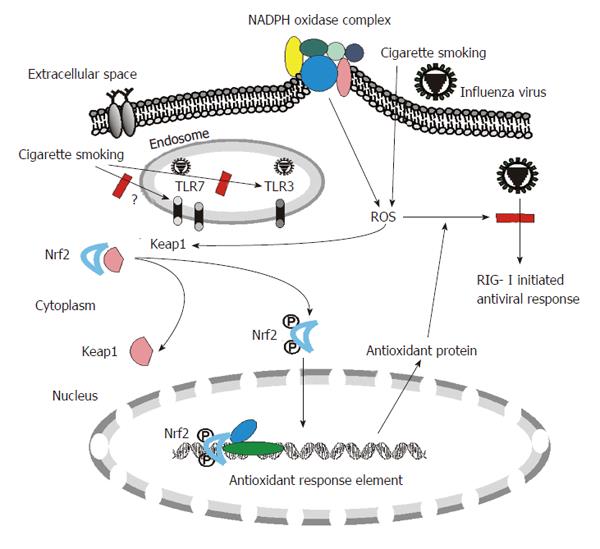Copyright
©2014 Baishideng Publishing Group Co.
Figure 1 Cigarette smoking and its subsequent induced cellular oxidative stress suppress innate response to influenza virus.
Influenza virus components are internalized from the cell surface in endosomes, and specific ligands are recognized by toll-like receptors (TLR)3/7 and cytosolic retinoic acid-inducible gene 1 (RIG-I). The PRRs then activate transcription factors that lead to the production of antiviral interferons and pro-inflammatory cytokines. Cigarette smoking (CS) inhibits RIG-I, TLR3 and possibly TLR7 recognition of influenza virus. Reactive oxygen species induced by CS are involved in the interference of PRR function. Reducing oxidative stress in cells, either by increasing Nrf2 or by Keap1 knockout, has potential therapeutic effect of restoring virus recognition by PRRs suppressed by CS. ROS: Reactive oxygen species; PRRs: Pattern recognition receptors.
- Citation: Wu W, Metcalf JP. Cigarette smoking and innate immune responses to influenza infection. World J Immunol 2014; 4(1): 20-25
- URL: https://www.wjgnet.com/2219-2824/full/v4/i1/20.htm
- DOI: https://dx.doi.org/10.5411/wji.v4.i1.20









